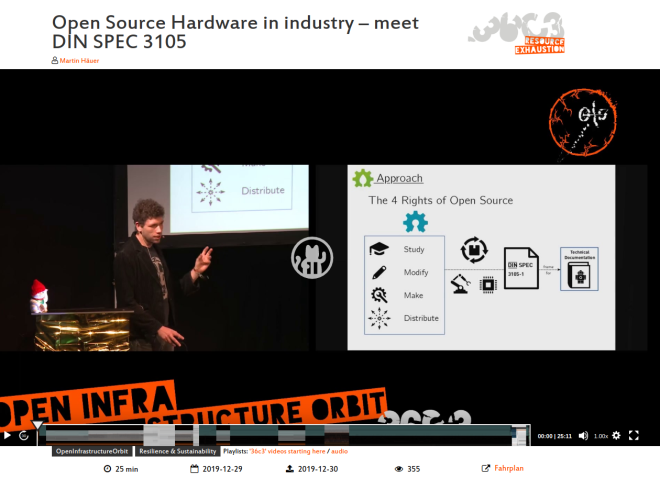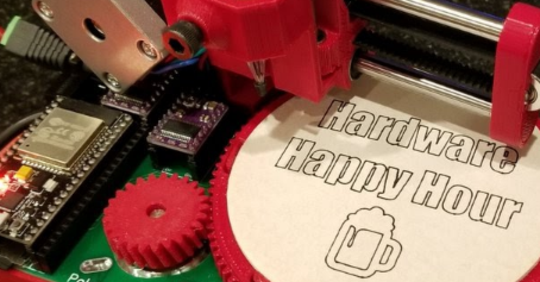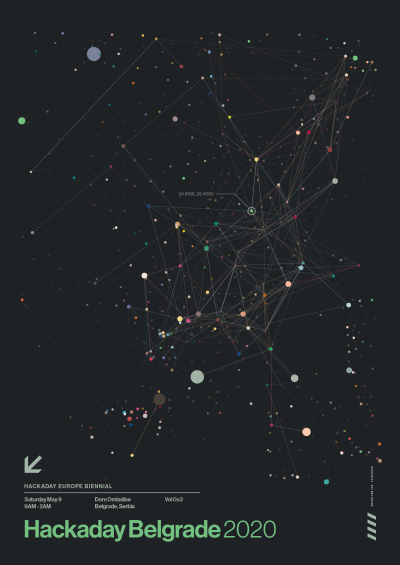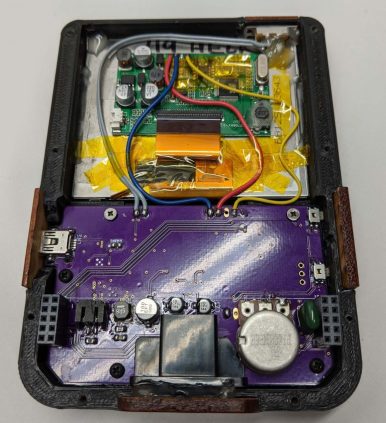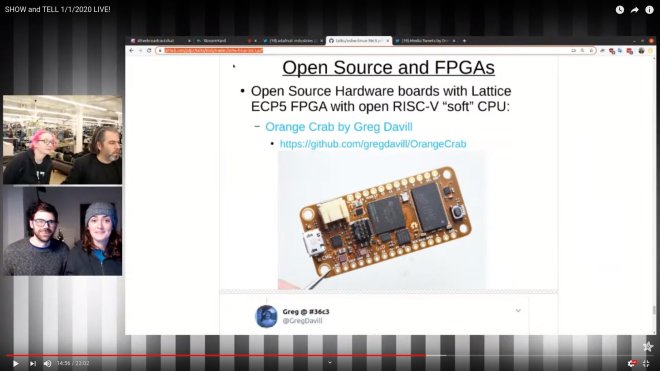Open Source Hardware in industry – meet DIN SPEC 3105
Compared to software, the open source approach is relatively new to most actors in the field of (mechanical) hardware.
Plus Open Source Hardware faces some special issues. A yet missing definition of its “source code” is one of them (+ patent law, liability, engineers that do not know how to work with git, costly prototyping…)
DIN SPEC 3105 will be/is the first official standard for Open Source Hardware and also the first official standard ever published under a free license (CC-BY-SA 4.0; that was a lot of lobby work 😉 ). It defines the technology-specific “source” of Open Source Hardware and aims to build a bridge between research institutes, public authority, industry and the worldwide open source community.
Here is a PDF of the slides: OSH Standardisation-36c3
 To look into the standards themselves:
To look into the standards themselves:
Additional information is hosted on GitLab:
Technology-specific Documentation Criteria (TsDC) specify the requirements for the technical documentation of Open Source Hardware (OSH). A TsDC is created (yet manually) by OSH projects/developers and is a subset of the TsDC database (TsDC-DB) provided in this repository. The concept of a TsDC was initially mentioned in DIN SPEC 3105-1 (since v0.3) and probably will be mainly used in this context.
Learn more about Open Source Ecology Germany on their website:
Enable a sustainable way of life and the emergence of an open source economy through self-created and freely available means of production .

